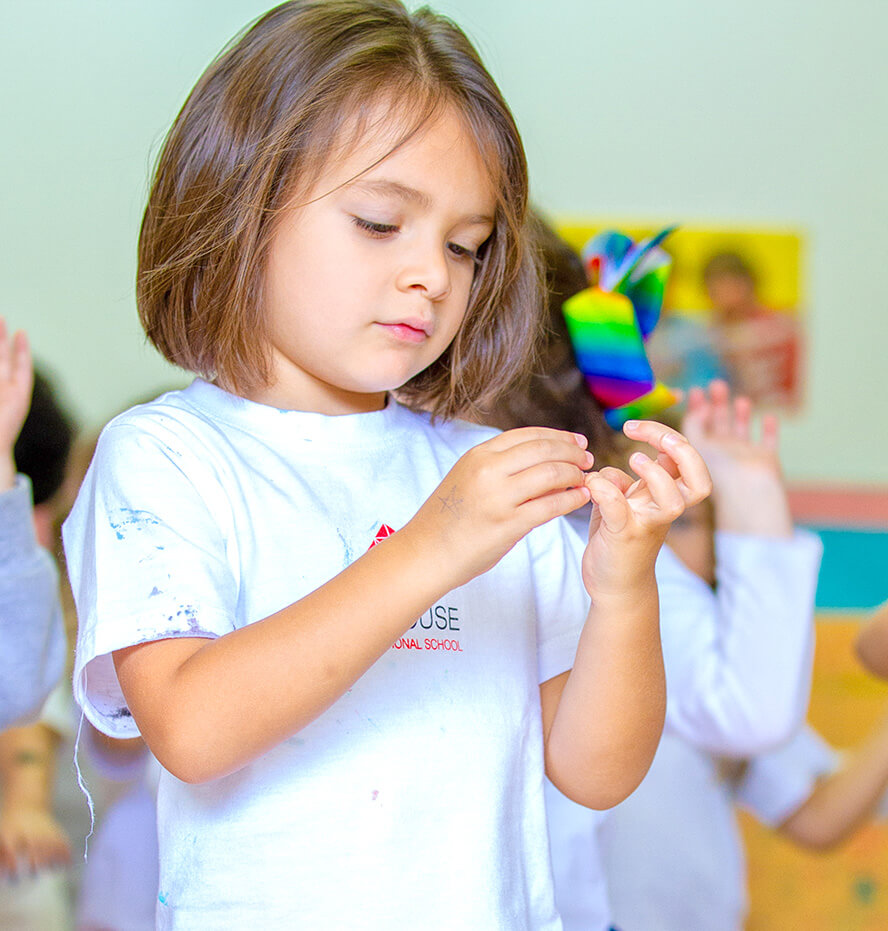Our curriculum consists of five fundamental premises for a comprehensive kindergarten education: the transmission of values, concepts, knowledge, skills and attitudes.
CURRICULAR STRUCTURE
- Our SelfOur beliefs and values as individuals, community and human species; human relations; culture as identity; my rights and responsibilities.
- Our SpaceThe history of mankind, my origins, the relationship between the I and the whole. My family, regional and global perspectives.
- Our ObservationsThe surrounding world. How it works, why it is not different, what we see and what we don't see; nature and its laws, science, the natural and the indecipherable.
- Our Track recordThe way mankind began to leave evidence of its own existence, ideas and discoveries; our relationship with the known and the unknown, our forms of expression; men´s thoughts and aesthetics through men’s lenses.
- Our OrganizationA study about systems, communities and human organizations and their influence on the whole.
- Our PlanetReflections on natural resources, energy sources, decay and regeneration. Our home yesterday, today, tomorrow. The way we take care of ourselves and future generations.
Red House made of every space an environment conducive for play and childhood development, respecting each and every child´s growth time, personality and family history.
Our teachers encourage the socioemotional evolution of each group through fun multi-sensorial playful activities that boost the imagination, friendships and the absorption capacity for new knowledge.

TODDLER
At this early stage of verbal communication, listening and nonverbal communication are cherished. We carry out challenging activities that promote motor skills in an environment where children feel safe and secure to build social and affectionate relationships.
The program stimulates the pleasure of discovering and the joy of studying. It makes children feel happy and respected, curious and exploratory, able to understand things more easily and to find answers not only on request, but whenever they wish. In this program, emotional and sensorial stimuli are worked intensely from first contact: imputable to learning 2 languages, Math, Sciences, Arts and Music and to teaching strategy: classes are always planned with well framed parameters but experienced by students as fun play.
KINDERGARTEN 3
At such a life stage filled with energy and fantasies, K3 was designed precisely so students can establish connections between the imaginary, the school and the real world.
Students gain confidence to express themselves verbally. Friendships and emotional bonds gain greater importance, and curiosity drives them to explore everything around them. At this stage, students develop a lot of autonomy: they are encouraged to think, reflect and take care of themselves, of others and of nature.
KINDERGARTEN 4
Red House strongly encourages students to be inquirers, communicative and open to sensible risks and challenges. Up to this stage, the acquisition of knowledge is mainly through perceptions and associations, but from this phase onwards the brain becomes more demanding for reasoning, memory and language.
They can express themselves in Portuguese and English, learning to distinguish the moments in which they use each language. It’s the perfect time to introduce our English language literacy program: Phonics.
KINDERGARTEN 5
At this stage great curiosity regarding the written language ensues. Our students begin to form hypotheses as to how to read and write in Portuguese while still working with English Language Phonics.
Mathematical reasoning evolution is accomplished through incremental and constructive logical and numerical thinking as well as practice and experiences. A program filled with experiences and fun breeds new discoveries, ideas and thoughts about the self, and the surrounding world.
Just like Toddler, K3 and K4, K5 is also a flexible international instruction program recognized in America, Europe and other English speaking countries, and it is compliant with the Brazilian legislation educational policies.
Language acquisition
Second language acquisition in childhood provides several benefits to children and, consequently, to adulthood. The human brain comes into the world prepared to absorb knowledge. Language wise, it all begins as early as intrauterine life, extending through early childhood and longer. The earlier children are exposed to learning a foreign language, the more natural the new language acquisition is.
Songs, illustrated books, dialogs, games, learning activities and games can encourage children to develop an interest in new languages.
It is important, however, to keep in mind that learning a new language requires different types of approaches in different phases of childhood. Up to around the age of 3, instruction must be playful, as for learning in general. From age of 4, children can engage in formal learning and be introduced to writing, speaking and reading comprehension of different textual forms.






